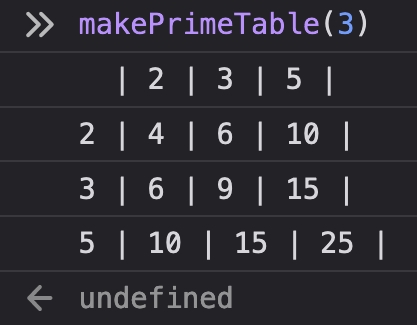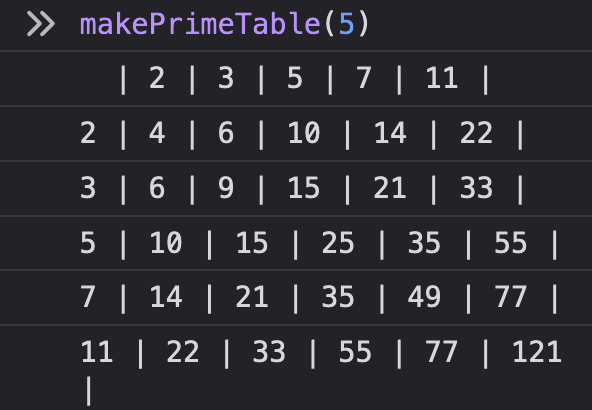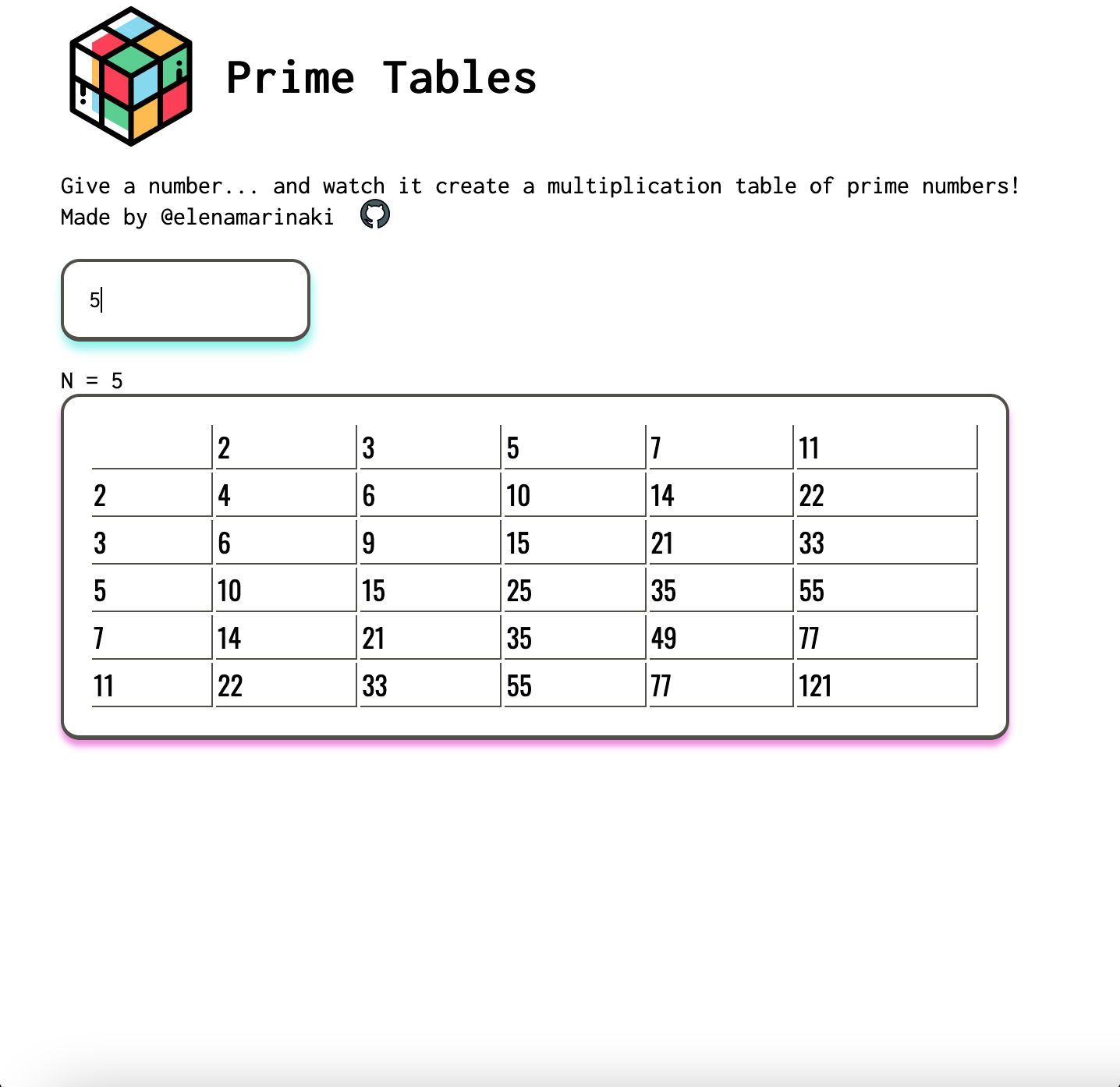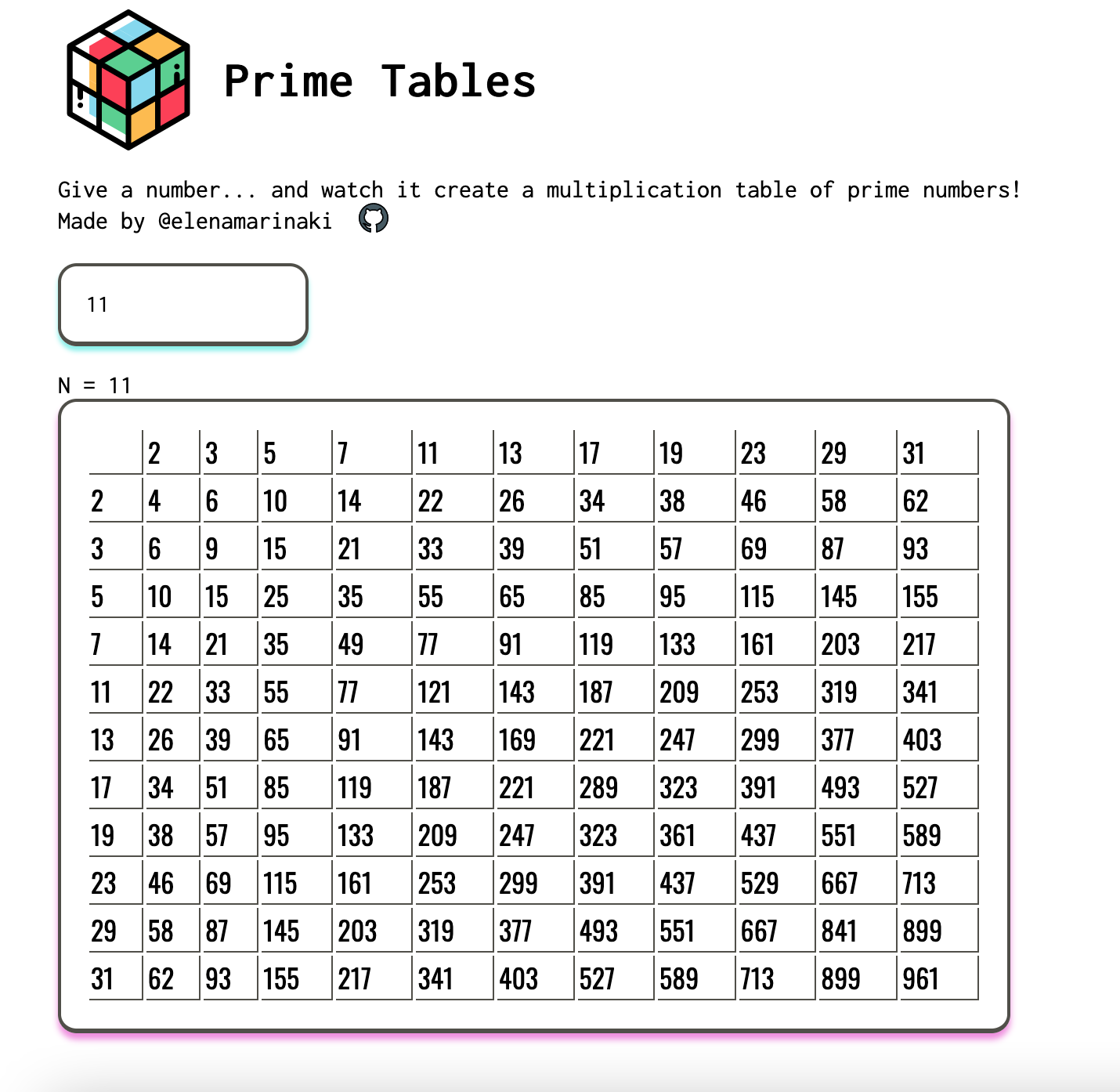2️⃣ 3️⃣ 5️⃣ 7️⃣ 1️⃣1️⃣ 1️⃣3️⃣ 1️⃣7️⃣ 1️⃣9️⃣ 2️⃣3️⃣ 🔮
This application takes numeric input (N) from a user and outputs a multiplication table of (N) prime numbers.
Programming used for the project: JavaScript
The user gives a number in the input field and presses Enter. The application outputs a (N+1) x (N+1) grid of numbers.
I tried to separate each task to a different function. This way testing is easier and more effective. 🔬
The application was built in the following stages:
-
CONSOLE stage 🖥
-
I first created a prime numbers generator function
primeNumbersGenerator(). This is an iterable entity that outputs prime numbers. It checks if an integer is divisible by 1 or itself, and registers it as prime withyield. 🌾 -
The next function
giveNPrimeNumbers()iterates the generator with upper limit an inputN, that is the argument of the function itself. It returns an arrayprimesArrwith the firstNprimes, plus an extra empty slot at the beginning. 📥 -
I devised the
makePrimeTable()function, to output the table on the console. The formatting is achieved through a string variablerowOutputthat serves as each row of the array. The first row is populated with the original output of primes from thegiveNPrimeNumbers(), separated by the|character. Each subsequent row is populated with the multipliers of each one of the same prime numbers with every other one in the array. -
The result for an input N = 3️⃣ is:
| 2 | 3 | 5 |
2 | 4 | 6 | 10 |
3 | 6 | 9 | 15 |
5 | 10 | 15 | 25 | -
Screenshots for other inputs 🧮


-
-
APPLICATION stage 🟪 🟧 🟨
- The main decision I have to make for this stage is if I would just create an element and output the console result as a text, or something more visually pleasing, such as presenting the results in an actual table, using the
<table>. 🧰 - My first approach was to create the
makePrimeTableHTML()function (commented out in the script.js). This was a slightly modified version ofmakePrimeTable(), that was just presenting the console formatted result in an HTML page. The presentation was not very efficient this way, as a layout problem was created through the use ofwhite-space: pre;in the CSS. Thewhite-space: pre;was necessary to parse thenew linecharacter through the.textContentmethod in js. - My second - and final - approach was the function
primeTable(). ✨ Its task is the same as in the case ofmakePrimeTable()andmakePrimeTableHTML(), but this time the DOM is being manipulated. I create aTABLEaccording to the givenNnumber, in which I present the results. This function is called by thecreateTable()function, which is triggered once the input number is submitted through theform.
- The main decision I have to make for this stage is if I would just create an element and output the console result as a text, or something more visually pleasing, such as presenting the results in an actual table, using the
- For the testing, I created a test-helpers.js which has a couple of functions that test regular equality or equality between two arrays, since those are reference objects. It also includes the the declaration of the test function itself. ⚖️
- In the files test.js I am testing the functions of the file script.js for various inputs, trying to make the test functions pass and fail. 🗝
- Many bugs were corrected during the implementation process, either by being obvious, or by using a
console.log()wherever appropriate.- One of these instances was what would happen given any other input, except for a positive integer greater than 1. In that case, the primes generator function
primeNumbersGenerator()would run theoretically forever, causing the page to stop working. - SOLUTION: checking inside the
createTable()function that runs once the user input has been submitted. The input is checked, and if it is anything other than a positive number greater than 1, an error message appears and the execution ofprimeNumbersGenerator()is prevented.
- One of these instances was what would happen given any other input, except for a positive integer greater than 1. In that case, the primes generator function

